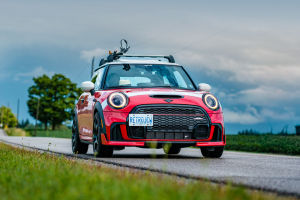Riding a motorcycle is an exciting adventure that opens up a new way to experience the world.
For beginners, it’s important to approach it with care, knowledge, and patience.
Whether you're considering your first bike or already gearing up for your first ride, here are some essential tips to help you get started safely and confidently!
1. Choose the Right Motorcycle
As a beginner, selecting the right bike is critical. Opt for a motorcycle with a manageable engine size, typically in the range of 250cc to 500cc. Smaller engines offer less power, which makes it easier to control and handle. Popular beginner bikes include the Honda CBR300R and Kawasaki Ninja 400, both offering good balance, power, and ease of use.
2. Take a Motorcycle Safety Course
The best way to start is by taking a certified motorcycle safety course. These courses are specifically designed to teach beginners how to handle a bike, navigate different road conditions, and practice emergency maneuvers. Many courses provide hands-on training, so you can learn in a safe, controlled environment before venturing out on your own.
3. Gear Up for Safety
Protecting yourself is non-negotiable. Invest in proper motorcycle gear, including a DOT-certified helmet, gloves, jacket, pants, and boots. A good helmet will protect your head in the event of a fall, while gloves and jacket offer additional protection and comfort. Look for gear made from abrasion-resistant materials such as leather or textile fabrics designed for riding. High-visibility colors can also enhance safety, especially when riding in low light conditions.
4. Master Basic Controls
Before you hit the road, familiarize yourself with the basic motorcycle controls. Learn how to operate the throttle, clutch, brake, and gear shifter smoothly. It’s crucial to understand the importance of the clutch when shifting gears and how the throttle responds to your input. Spend time in a parking lot practicing starting, stopping, and maneuvering at low speeds. This will build your confidence and help you react appropriately in real traffic situations.
5. Practice Slow-Speed Maneuvers
Mastering slow-speed maneuvers is essential for every motorcycle rider. Beginners often feel more nervous at low speeds, but it’s crucial to practice. Exercises like making sharp turns, tight U-turns, and weaving between obstacles help develop your handling skills. At slow speeds, maintaining balance and control is key.
6. Learn to Ride Defensively
Motorcycle riders are more vulnerable than other vehicles on the road, so practicing defensive driving is essential. Always stay alert and anticipate the movements of other drivers. Keep a safe distance from other vehicles, especially in traffic, and be mindful of blind spots. Avoid riding too fast for conditions, particularly in rain or at night when visibility is limited. Scan the road ahead and look for potential hazards, such as potholes or debris.
7. Start with Short Rides
As a beginner, don't rush into long-distance rides. Start with short, manageable rides around your neighborhood or local area. Gradually build your confidence as you become more comfortable with the controls and the road. Short rides allow you to focus on improving your skills without feeling overwhelmed.
8. Understand Motorcycle Maintenance
Basic maintenance knowledge can save you a lot of trouble down the road. Keep your motorcycle in top condition by regularly checking the oil, tire pressure, brake fluid, and chain tension. Routine maintenance prevents breakdowns and ensures your bike runs smoothly. Most motorcycles come with a manual that explains basic upkeep, so take time to read it and understand the needs of your specific model.
9. Be Mindful of Weather Conditions
Motorcycles are more affected by weather conditions than cars, so be mindful of the weather before heading out. Riding in the rain can be slippery, and wet roads increase the risk of accidents. Windy conditions can make handling a bike challenging, especially at high speeds. Always check the weather forecast before planning your rides, and if conditions are unfavorable, consider postponing your ride for safety reasons.
10. Stay Calm and Patient
It’s normal to feel nervous when you start riding, but don’t rush the learning process. Take your time and don’t feel pressured to go faster than you're comfortable with. Riding requires concentration and patience, so focus on the task at hand rather than worrying about how others may perceive your riding. The more you ride, the more natural and comfortable it will become.
Starting your journey as a motorcycle rider is exciting but requires careful attention to safety, skills, and preparation. By selecting the right motorcycle, gearing up with essential safety equipment, mastering basic controls, and respecting the road, you’ll gradually build the confidence needed to enjoy motorcycle riding safely. With practice and patience, you’ll soon find the open road becomes a second home!


